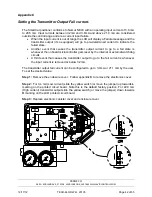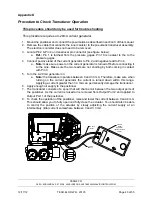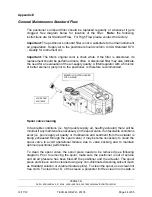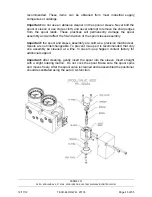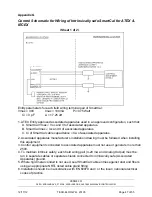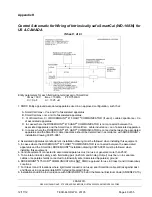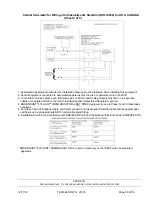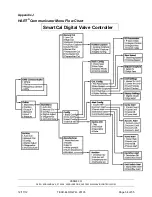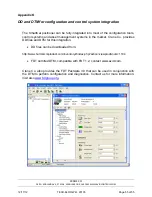
CRANE
CO.
280
N.
MIDLAND
AVE.,
STE
258,
SADDLE
BROOK,
NJ
07663
WWW.AVIDCONTROLS.COM
12/17/12
TECH-440/D.W.O. 23135
Page 49 of 55
Appendix H
Control Schematic for Wiring of Intrinsically safe SmartCal (WD-10836) for
US & CANADA
(Sheet 1 of 4)
Entity parameters for each field wiring terminal pair of SmartCal:
Vmax = 30V
Imax = 100mA Pi=0.75 Watt
Ci = 0 pF Li = 17.25 uH
1. FMRC Entity approved associated apparatus used in an approved configuration, such that:
A. SmartCal Vmax
Voc and Vt of associated apparatus.
B. SmartCal Imax
Isc and It of associated apparatus.
C. Ci of Sm Ci of ROSEMOUNT
®
475 HART
®
COMMUNICATOR (if used) + cable capacitance
Ca
of associated apparatus.
D. In cases where the ROSEMOUNT
®
475 HART
®
COMMUNICATOR is not connected between the
associated apparatus and the SmartCal, Li of Sm cable inductance
La of associated apparatus.
E. In cases where the ROSEMOUNT
®
475 HART
®
COMMUNICATOR is connected between the associated
apparatus and the SmartCal, cable inductance should be determined in accordance with ROSEMOUNT
®
installation drawing 00475-0081.
2. Associated apparatus manufacturer’s installation drawing must be followed when installing this equipment.
3. In cases where the ROSEMOUNT
®
475 HART
®
COMMUNICATOR is connected between the associated
apparatus and the SmartCal. ROSEMOUNT
®
installation drawing 00475-0081 must be followed when
installing this equipment.
4. Control equipment connected to associated apparatus must not use or generate more than 250V.
5. To maintain intrinsic safety, each field wiring pair (4-20 mA and Analog Output) must be run in separate
cables or separate shields connected to intrinsically safe (Associated Apparatus) ground.
6. ROSEMOUNT
®
475 HART
®
COMMUNICATOR is NOT FMRC approved for use in Class II and III Hazardous
Locations.
7. For Class II and III locations where rigid metal conduit is not used, seal SmartCal cable entries against dust
and fibers using an appropriate NRTL listed cable gland fitting.
8. Installation should be in accordance with ANSI/ISA RP12.6 and the National Electrical Code (ANSI/NFPA 70).








